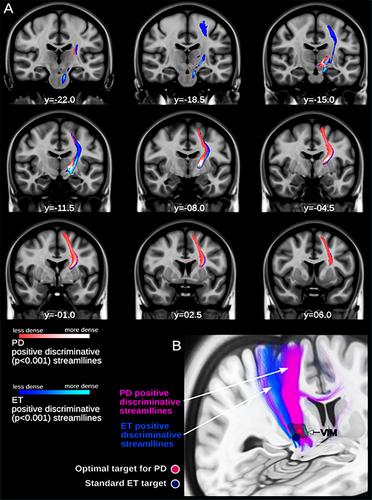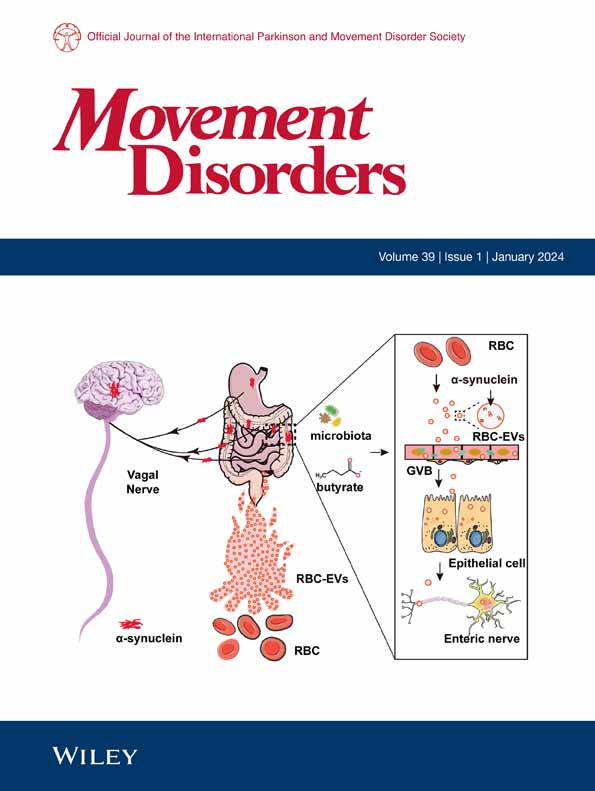Probabilistic Refinement of Focused Ultrasound Thalamotomy Targeting for Parkinson's Disease Tremor
Abstract
Background
There remains high variability in clinical outcomes when the same magnetic resonance image-guided focused ultrasound (MRgFUS) thalamotomy target is used for both essential tremor (ET) and tremor-dominant Parkinson's disease (TDPD).
Objective
Our goal is to refine the MRgFUS thalamotomy target for TDPD versus ET.
Methods
We retrospectively performed voxel-wise efficacy and structural connectivity mapping using 3-12-month post-procedure hand tremor scores for a multicenter cohort of 32 TDPD patients and a previously published cohort of 79 ET patients, and 24-hour T1-weighted post-MRgFUS brain images. We validated our findings using Unified Parkinson's Disease Rating Scale part III scores for an independent cohort of nine TDPD patients.
Results
The post-MRgFUS clinical improvements were 45.9% ± 35.9%, 55.5% ± 36%, and 46.1% ± 18.6% for ET, multicenter TDPD and validation TDPD cohorts, respectively. The TDPD and ET efficacy maps differed significantly (ppermute < 0.05), with peak TDPD improvement (87%) at x = −13.5; y = −15.0; z = 1.5, ~3.5 mm anterior and 3 mm dorsal to the ET target. Discriminative connectivity projections were to the motor and premotor regions in TDPD, and to the motor and somatosensory regions in ET. The disorder-specific voxel-wise efficacy map could be used to estimate outcome in TDPD patients with high accuracy (R = 0.8; R2 = 0.64; P < 0.0001). The model was validated using the independent cohort of nine TDPD patients (R = 0.73; R2 = 0.53; P = 0.025—voxel analysis).
Conclusion
We demonstrated that the most effective MRgFUS thalamotomy target in TDPD is in the ventral intermediate nucleus/ventralis oralis posterior border region. This finding offers new insights into the thalamic regions instrumental in tremor control, with pivotal implications for improving treatment outcomes. © 2024 The Author(s). Movement Disorders published by Wiley Periodicals LLC on behalf of International Parkinson and Movement Disorder Society.


 求助内容:
求助内容: 应助结果提醒方式:
应助结果提醒方式:


